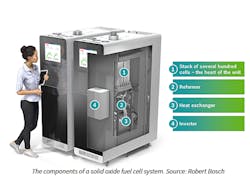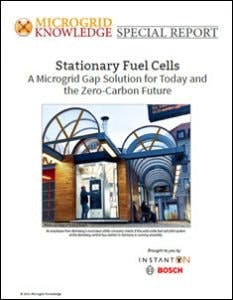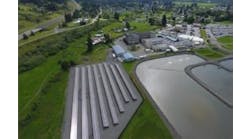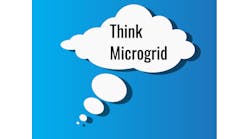In a new special report series brought to you by Microgrid Knowledge, Instant On and Robert Bosch, we explore how fuel cells can be a microgrid gap solution that fills the power gap, the fit gap and the sustainability gap. This third article explains the benefits of stationary solid oxide fuel cells and how novel distributed energy resources (DERs) will plug into the Internet of Things (IoT) landscape of tomorrow.
Download the full report.
Knowing the scenarios in which fuel cells can provide a viable energy solution is a start, but discerning customers will want to know more about this emerging technology before committing to it, even if the economics look compelling.
In Bosch’s compact 10 kW-class stationary solid oxide fuel cell solution, an electrochemical reaction generates electricity and heat. It delivers an overall efficiency of 60% for power generation, which rises to more than 85% when using the heat, making it more efficient than other energy converters of its size. For example, in Bosch’s first demonstration of the stationary solid oxide fuel cell in Bamberg, Germany, heat from the system was used to provide heating and hot water for a local bakery.
The fuel cells can be fed with natural gas, biogas or a mixture with hydrogen, and they can ultimately be fed 100% hydrogen to become truly zero carbon. Using natural gas today, they emit near-zero nitrogen oxides or particulates. They also deliver lower carbon emissions than average US grid electricity. A fuel cell running on natural gas produces about 0.74 pounds of CO2 per kWh, a nearly 20% savings compared to the 0.92 pounds of CO2 per kWh emitted by average US grid power.
Bosch has turned this innovation into a universally deployable, high-performance system that can be mass produced.
At a glance: Stationary solid oxide fuel cell benefits
- They have the potential to be an affordable way to manage energy costs because of their low operating and fuel supply costs. Their digital systems enable cost-saving predictive maintenance and lifetime optimization functionality.
- They provide outstanding electric efficiencies beyond 60%, even for smaller deployments starting around 10 kW. And they have the ability to use waste heat and act as combined heat and power assets that deliver overall efficiency of around 85%.
- They deliver the resiliency and reliability many utilities, businesses and homes need in light of growing extreme weather and grid infrastructure challenges.
- They are space effective, providing reliability and capacity where space and sunlight are limited.
- They are “dispatchable,” meaning fuel cell generation can be ramped up and down as needed, for example, to complement intermittent renewable generation from wind and solar. They perform this important function with a stable efficiency curve compared to gas-fired turbines and many other gensets that have a steeper drop in efficiency when running at partial capacity.
- They produce significantly lower carbon emissions than the diesel generators needed to meet the same power demand, with the potential to be part of a zero-carbon future if supplied with green hydrogen fuel.
- They do not sacrifice efficiency for fuel flexibility. The fuel cells operate at nearly the same efficiency, whether fueled by natural gas, hydrogen or biogas.
- They protect air quality, producing near-zero NOx or particulate emissions, even when running on natural gas.
- They are small-scale modular systems that fit into a wide variety of microgrid deployments, complementing renewable intermittencies as a reliable, dispatchable source of on-site power serving critical and essential loads.
- They can be deployed indoors or outdoors, thus fitting the environment and requirements of each unique location.
For more information, download the full report.
Novel DERs will plug into the Internet of Things (IoT) landscape of tomorrow
Microgrids optimized to best benefit customers rely on smart controls connected to IoT-enabled DERs. Stationary solid oxide fuel cell technology integrates with other DERs and microgrid controls. It offers seamless access to and transfer of data collected by the individual fuel cell units. That means these stackable DERs can be installed with a microgrid, or even before a microgrid, and then integrated into a new system that’s built around the fuel cells.
But the IoT benefits don’t stop at microgrid optimization. Importantly for customers seeking revenue and business opportunities in their local energy market as “prosumers,” the seamless data access and transfer enables them to be a part of energy aggregation and virtual power plant programs. That ability to offer supply in power and capacity markets, participate in demand response programs and provide other ancillary grid services means significant new revenue opportunities for system owners. New prosumer-enabling rules and programs are being launched or improved at federal and state levels rapidly, so it’s important to stay abreast of changes that could improve the economic case for many projects.
To learn more about how fuel cells can be a microgrid gap solution, check out the previous articles in the series below:
Stationary Fuel Cells Are a Microgrid Gap Solution
Customers Need a Microgrid Gap Solution. Fuel Cells Are It.
Download the full report, “Stationary Fuel Cells: A Microgrid Gap Solution for Today and the Zero-Carbon Future,” courtesy of Instant On and Robert Bosch to learn more.








